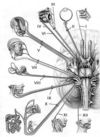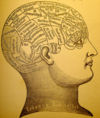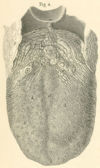Please Note
From digitalhumanities
- My favorite spreadsheet thus far [1] is provided by the "Online Etymology Dictionary" which resource I find to be exceptionally useful.
- Free translation services: English into Arabic! http://english.sakhr.com/
- A dizzying array of libraries. Overwhelming and exciting. http://dir.yahoo.com/Reference/libraries/
- This is another lovely page: http://www.catholic-forum.com/SAINTS/patron00.htm Thousands of patron saints indexed by name and by topic. Terribly amusing and interesting.
- So Here's my new directive: I will create rather than recreate. This could very well be transformative. I hope to God that it is!
- The seven movements of dance (to bend, to rise, to stretch, to glide, to jump, to turn, and to dart) were codified in 1796.
- Books:
- "An Intimate History of Humanity" by Theodore Zeldin
- "My Year of Meat" by Ruth Ozeki
- "The Living" by Annie Dillard
- "The Wind Up Bird Chronicle" by Haruki Murakami
- "The Time Traveler's Wife" by Audrey Niffenegger
- "Eichmann in Jerusalem" by Hannah Arendt
- "The Plague" by Albert Camus
- Academic phone book
Who uses Libraries and For What?
- Sweetness, Sourness, Bitterness, and Saltiness
- Smell and taste are two chemical senses. They are stimulated by chemical molecules. Sight and hearing are physical senses because they detect waves of light and sound. Tastes are detected by special structures called taste buds, of which we all have about 10,000, mainly on the tongue with a few at the back of the throat and on the palate (see Tongue). Taste buds surround pores within the protuberances on the tongue's surface and elsewhere. There are four types of tastebuds: these are sensitive to sweet, salty, sour and bitter chemicals. All tastes are formed from a mixture of these basic elements. Many different tastes can be distinguished because of the combination of taste and the more discriminating sense of smell. The sense of smell is estimated to be about 10,000 times more sensitive than the sense of taste. The two senses are very closely related. It is usually correct to say that one smells more flavors than he tastes. When the nose fails, from a bad cold, for instance, 80%% of the taste ability is lost. Loss of taste without loss of smell is pretty rare, but "dry mouth" can contribute because taste buds can only detect flavor when food is dissolved in saliva. Taste can also be lost as a result of damage to the taste buds themselves or damage to the cranial nerves that carry taste sensations to the brain. Full sensory appreciation of food also involves its appearance, its consistency, and its temperature. The author of a respected British medical journal says that if doctors would get closer to their patients, they could often smell the ailment. He believes that certain illnesses produce certain odors: a patient who smells like whole-wheat bread may have typhoid, and the smell of apples may indicate gangrene.





